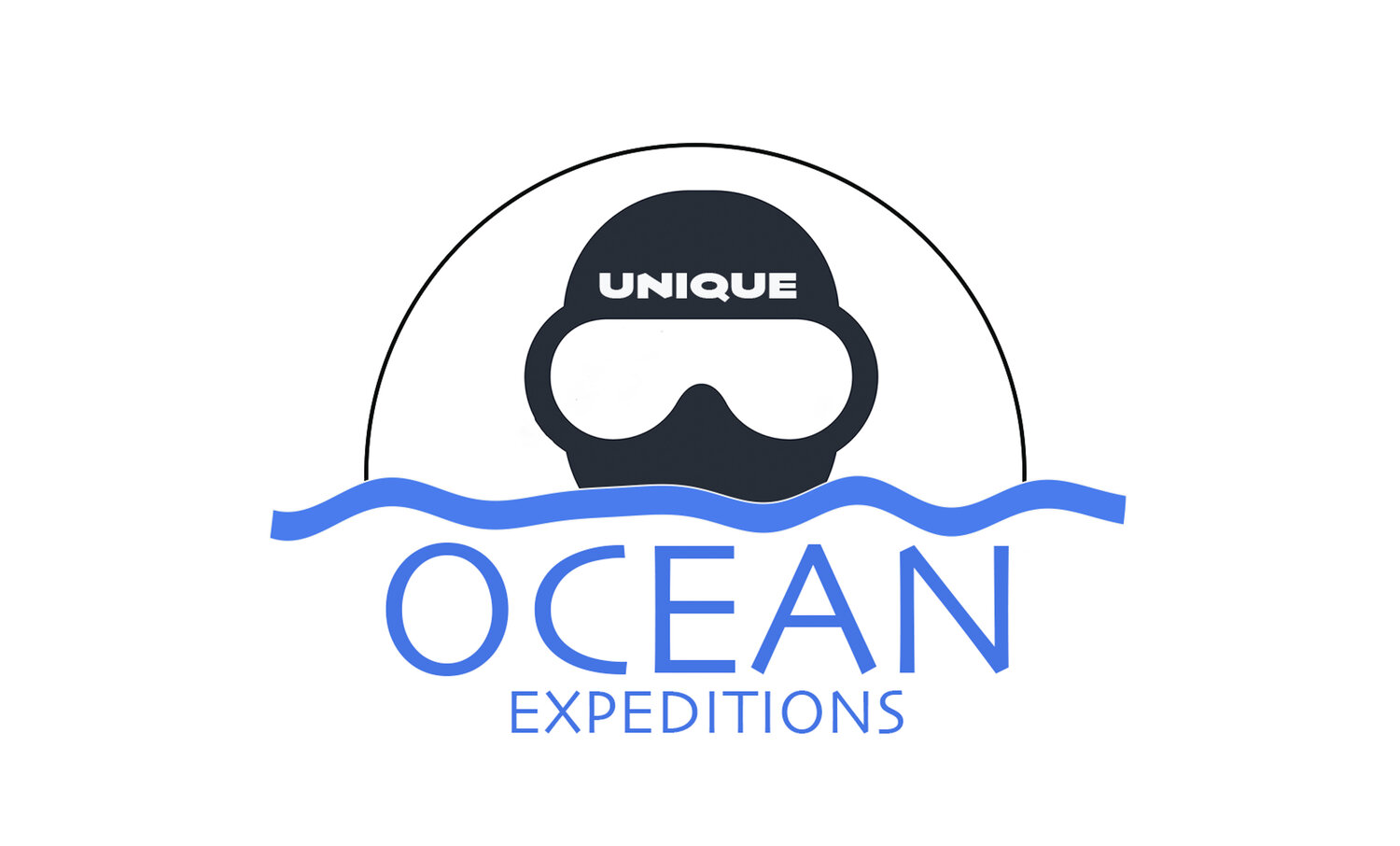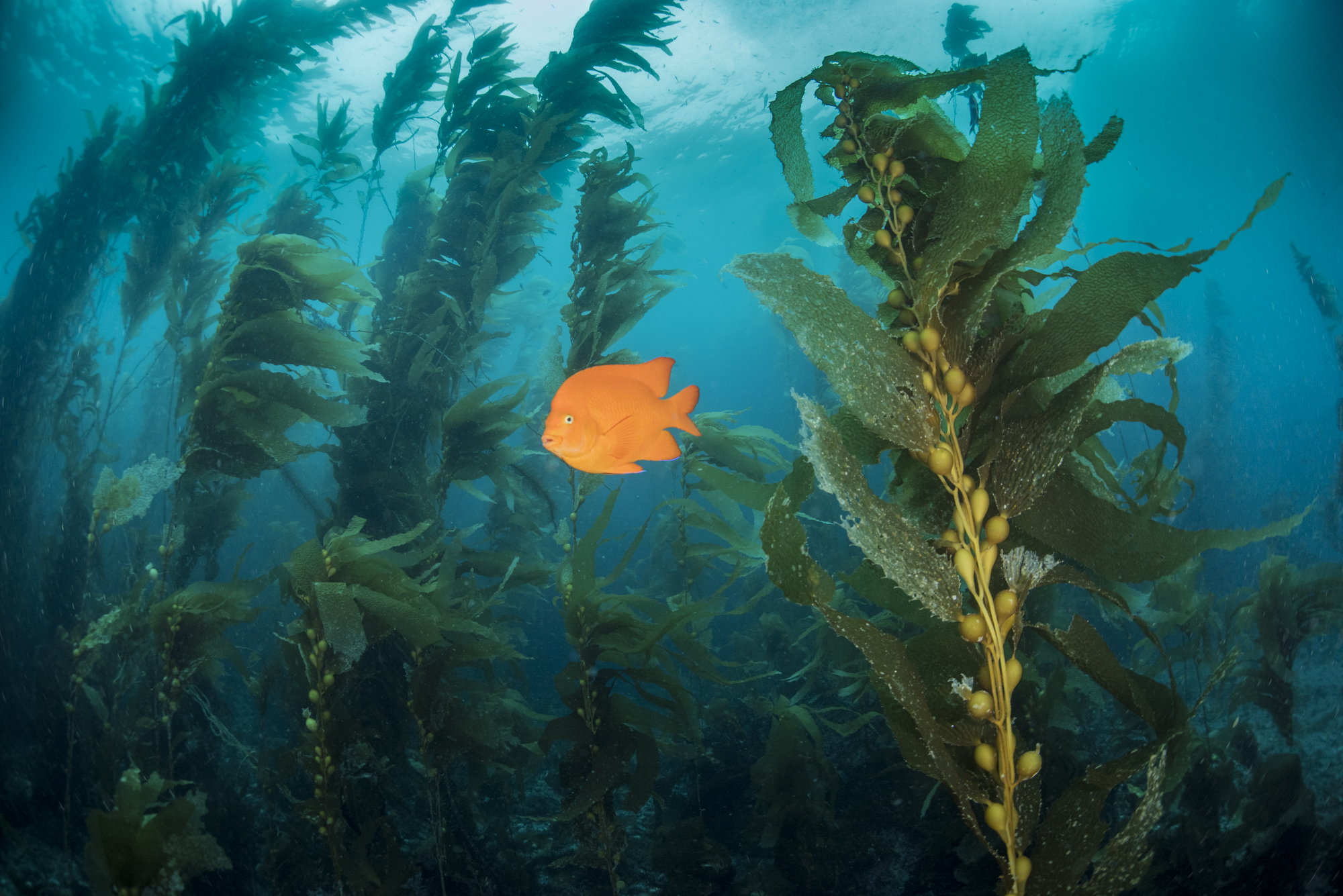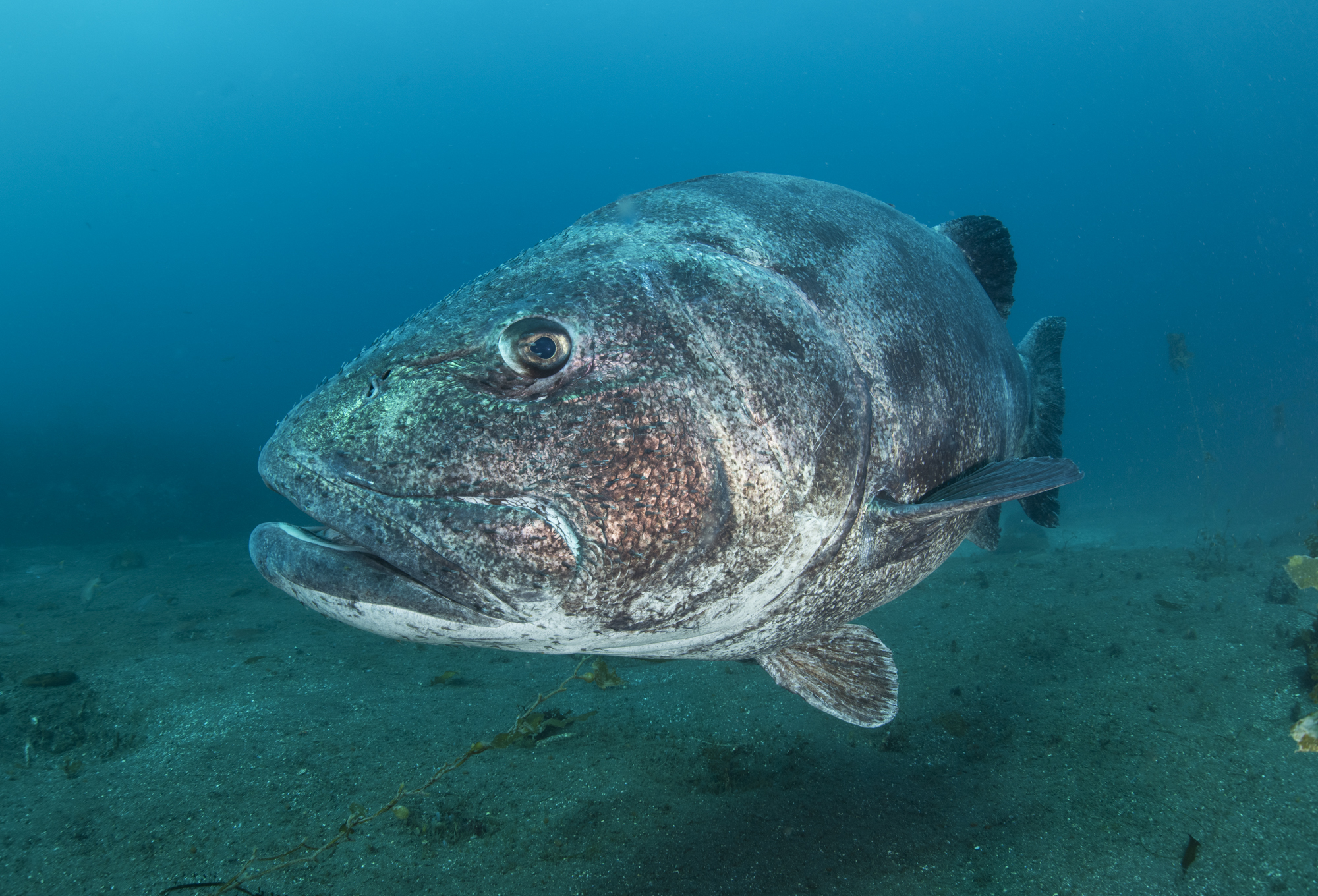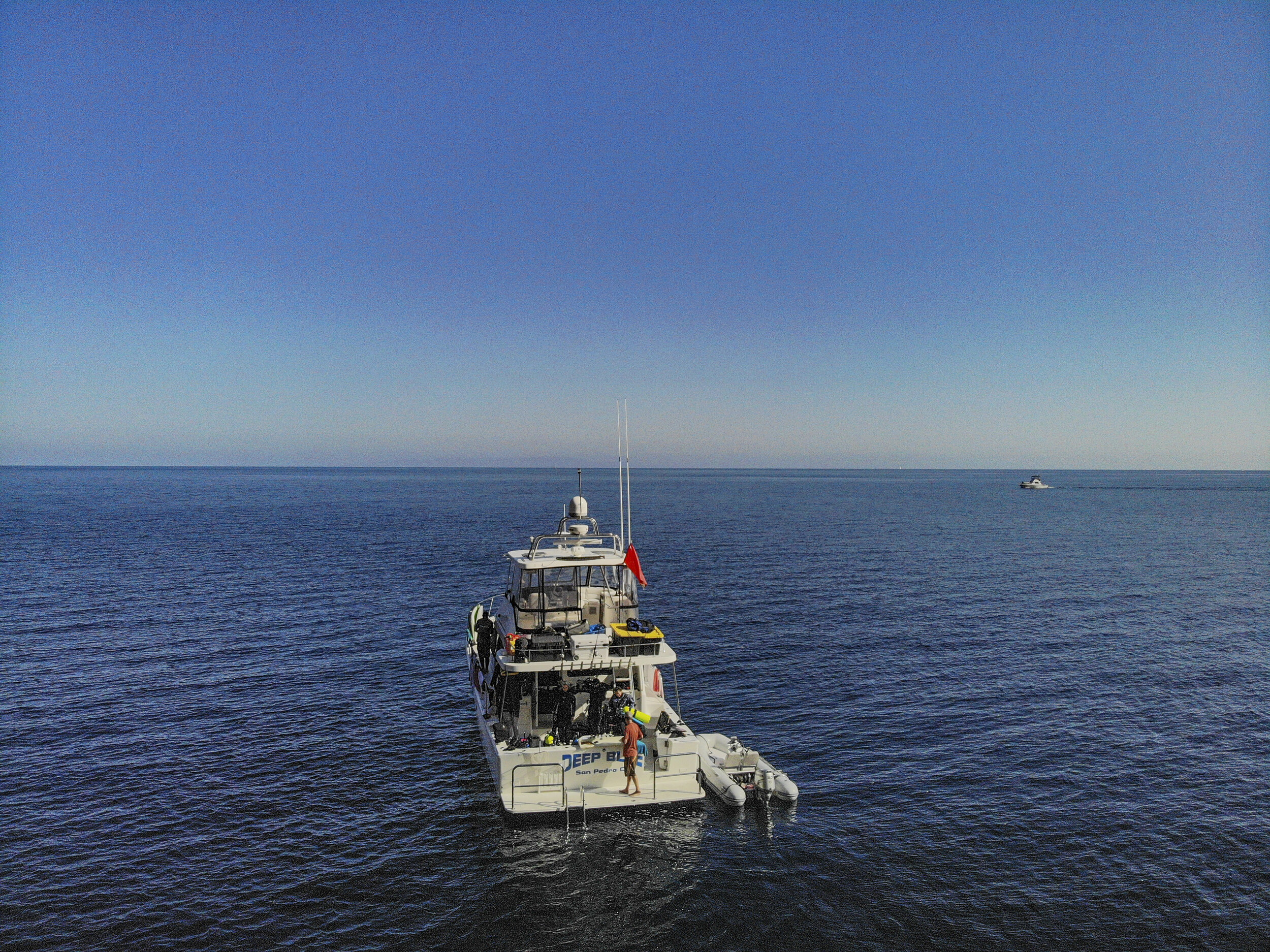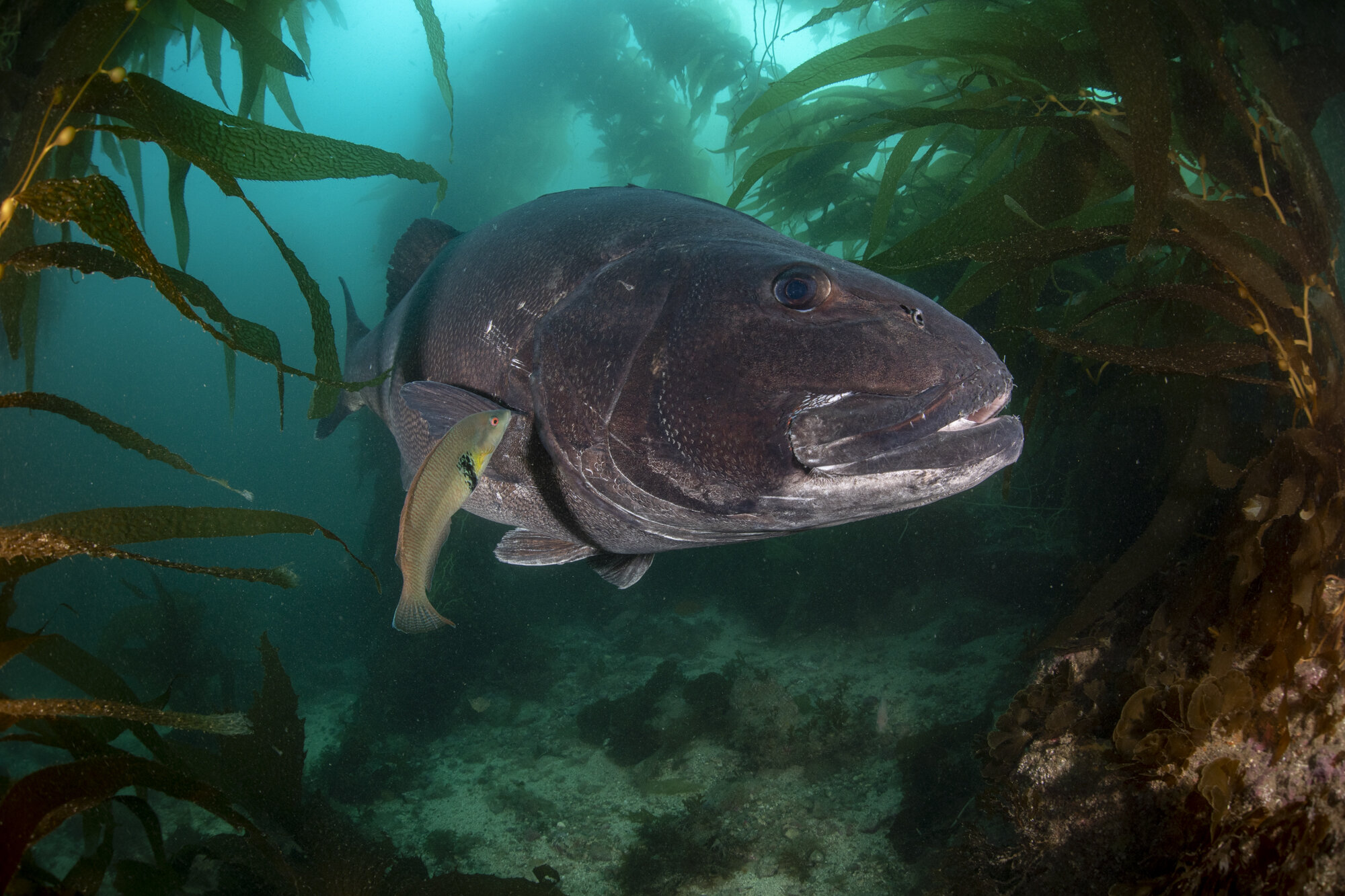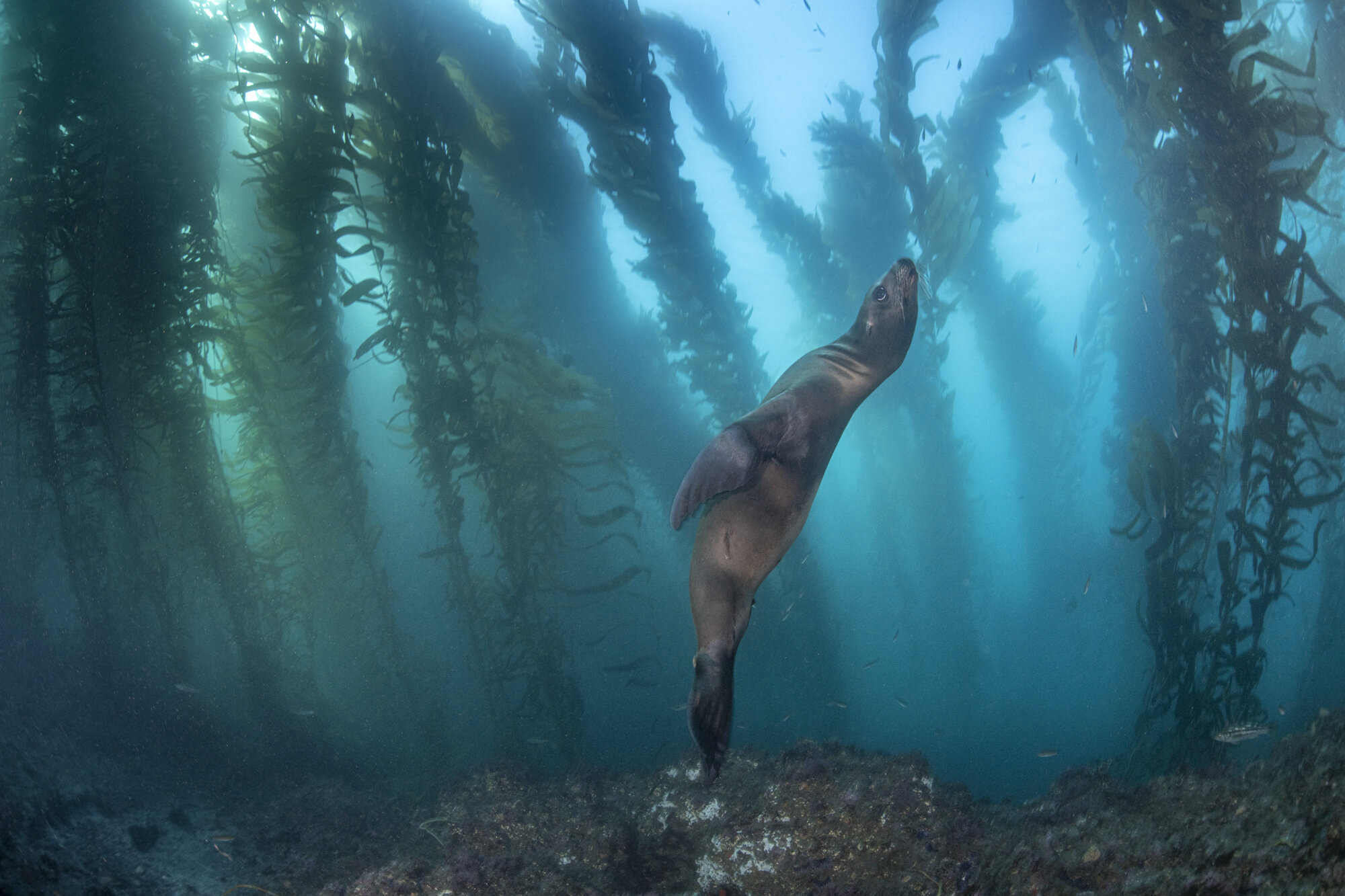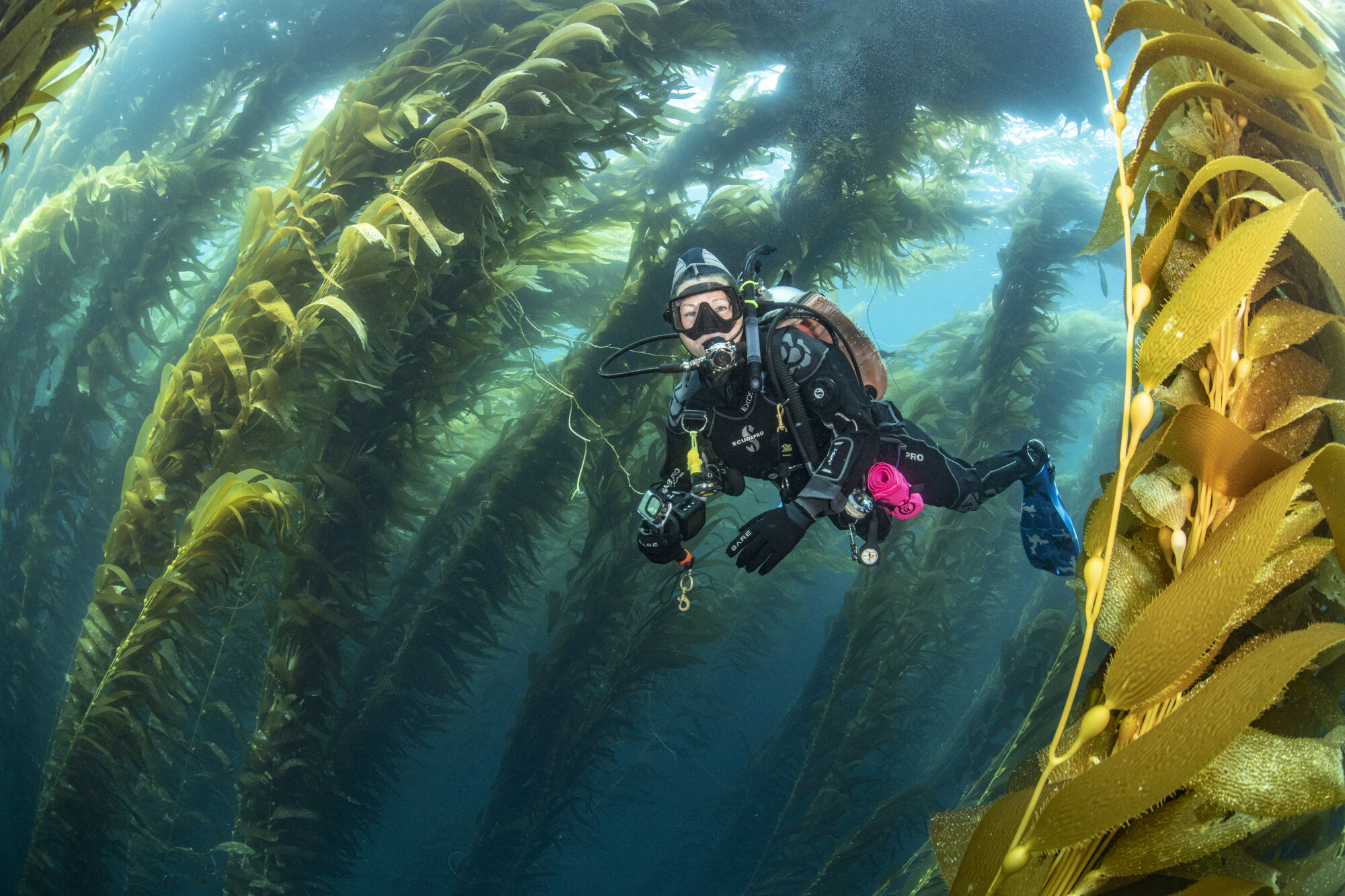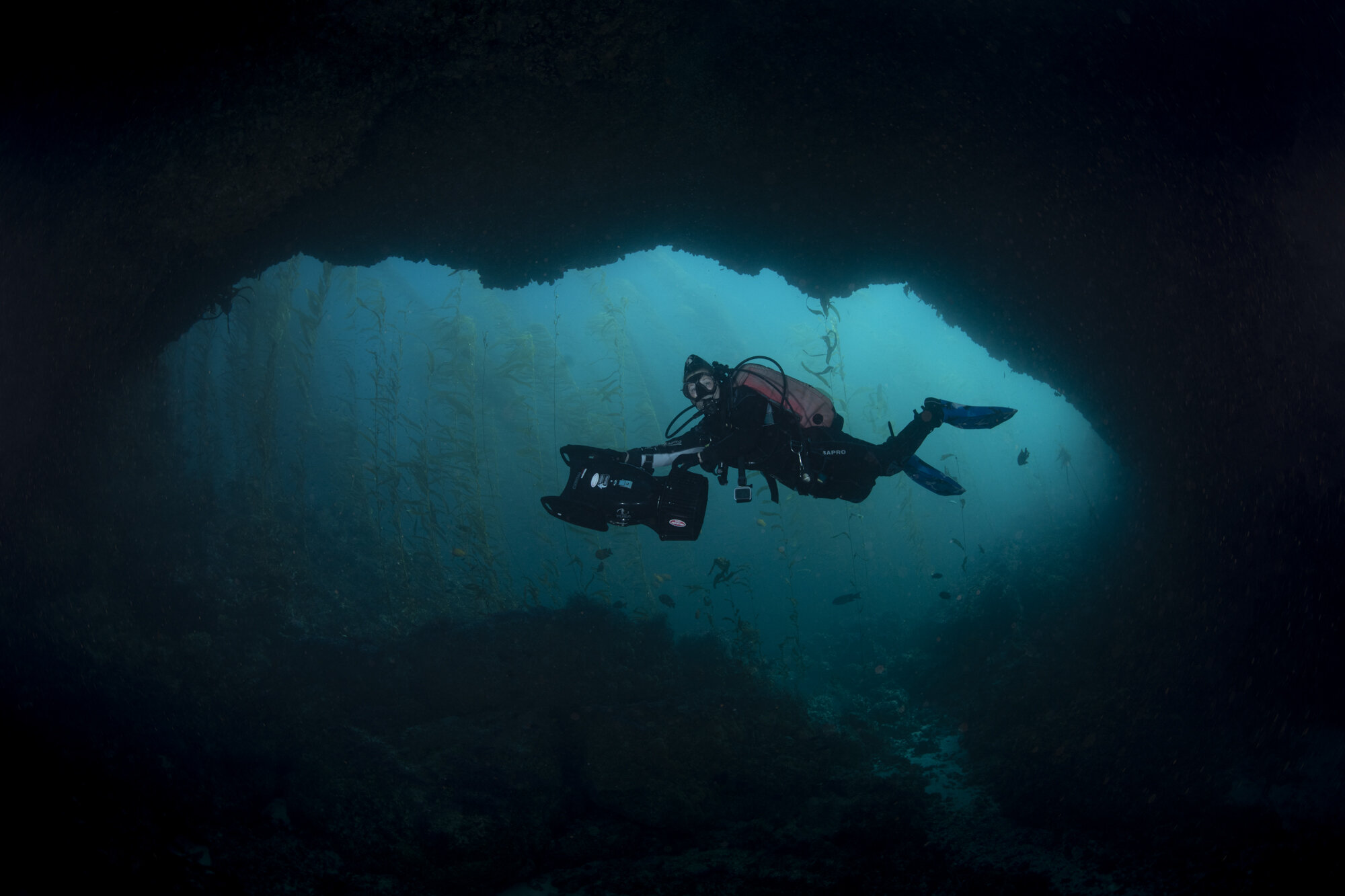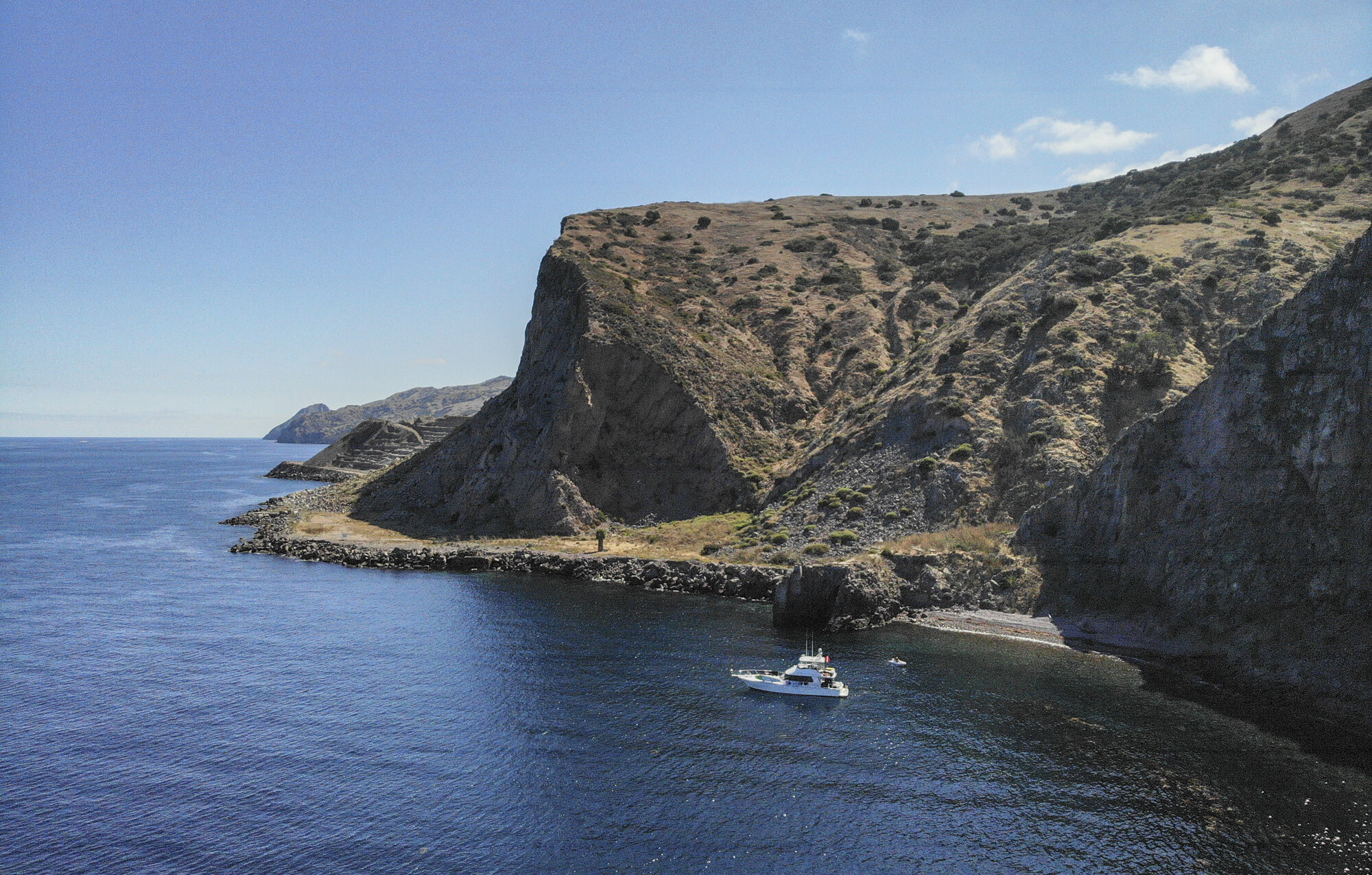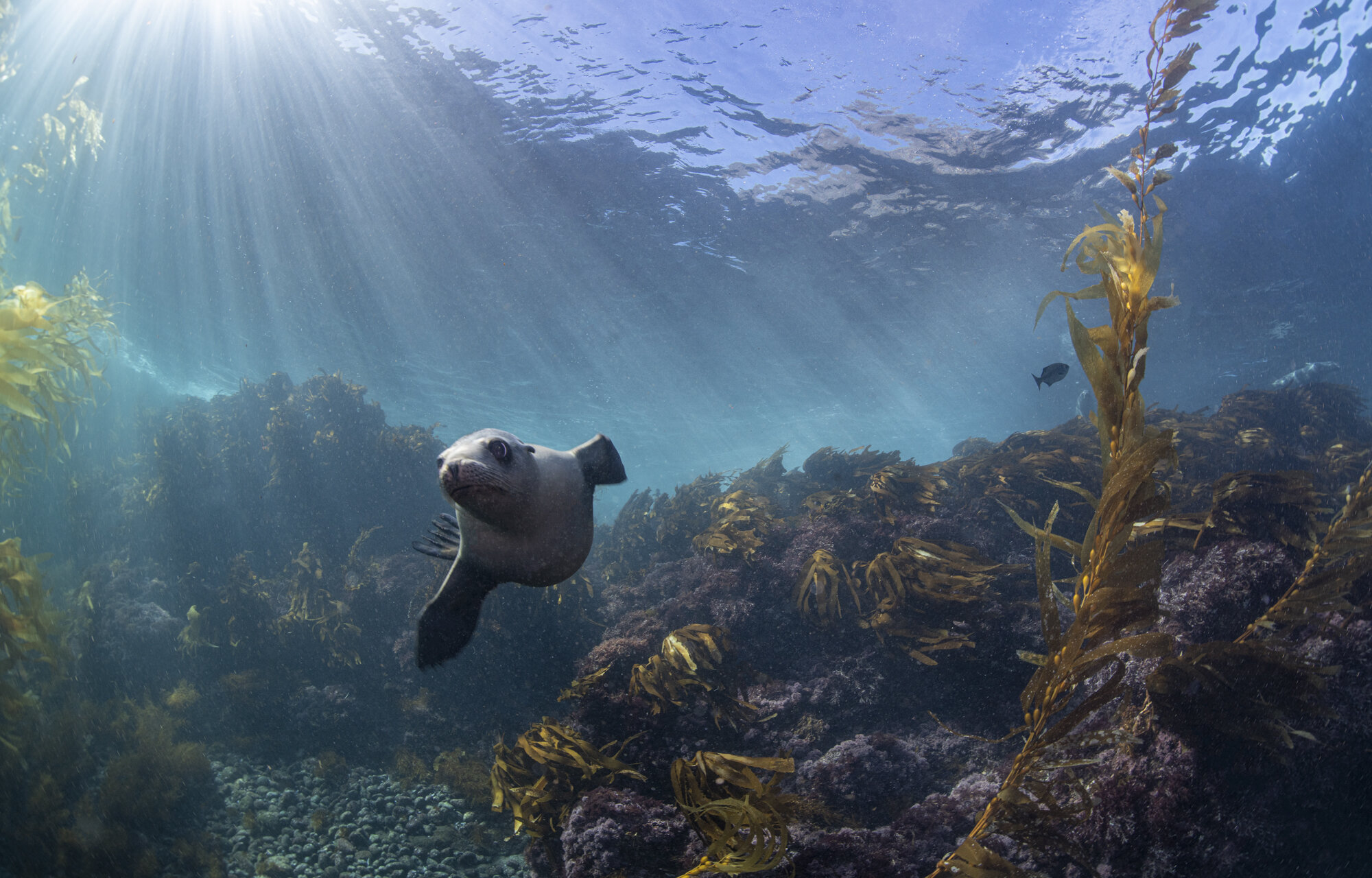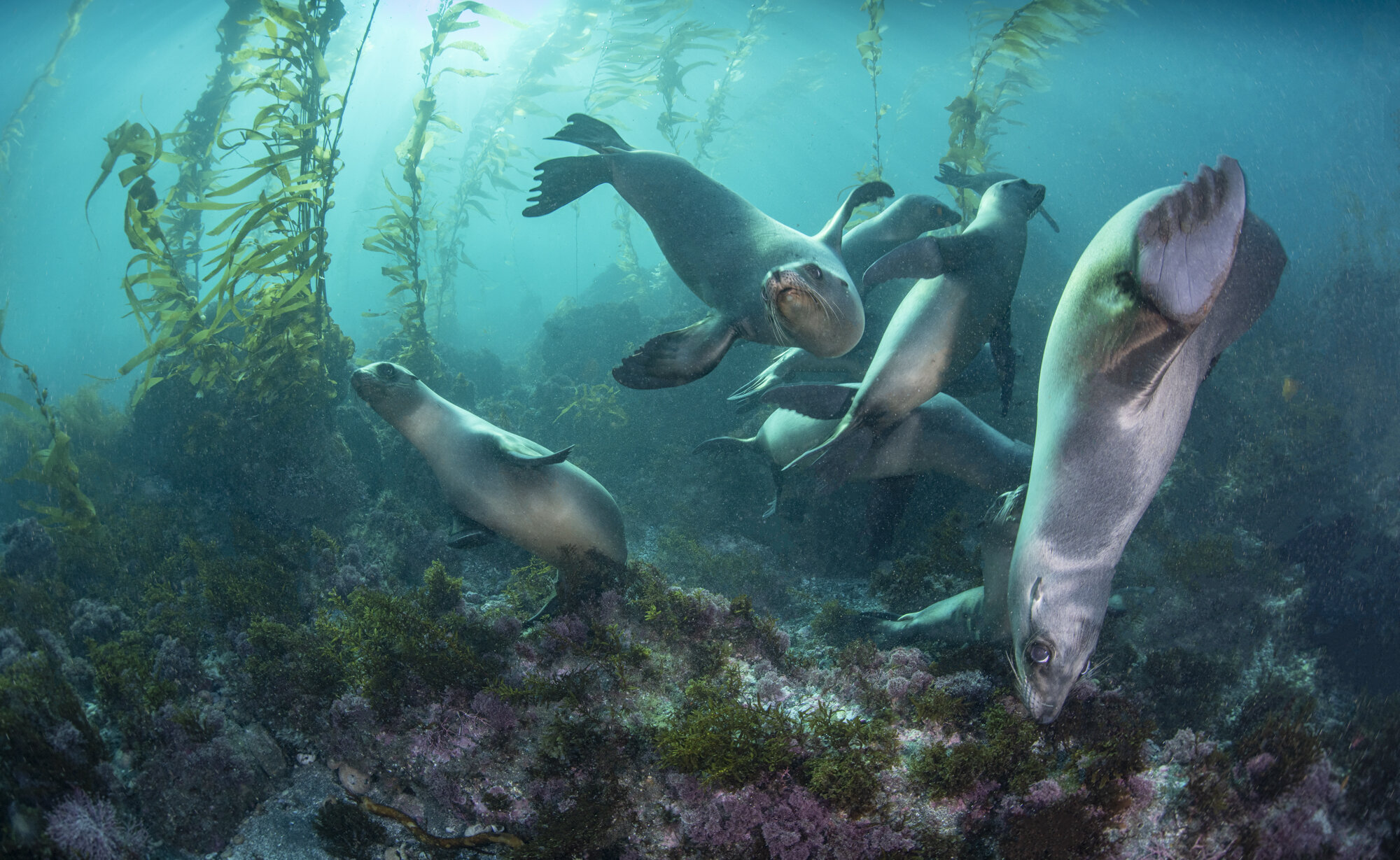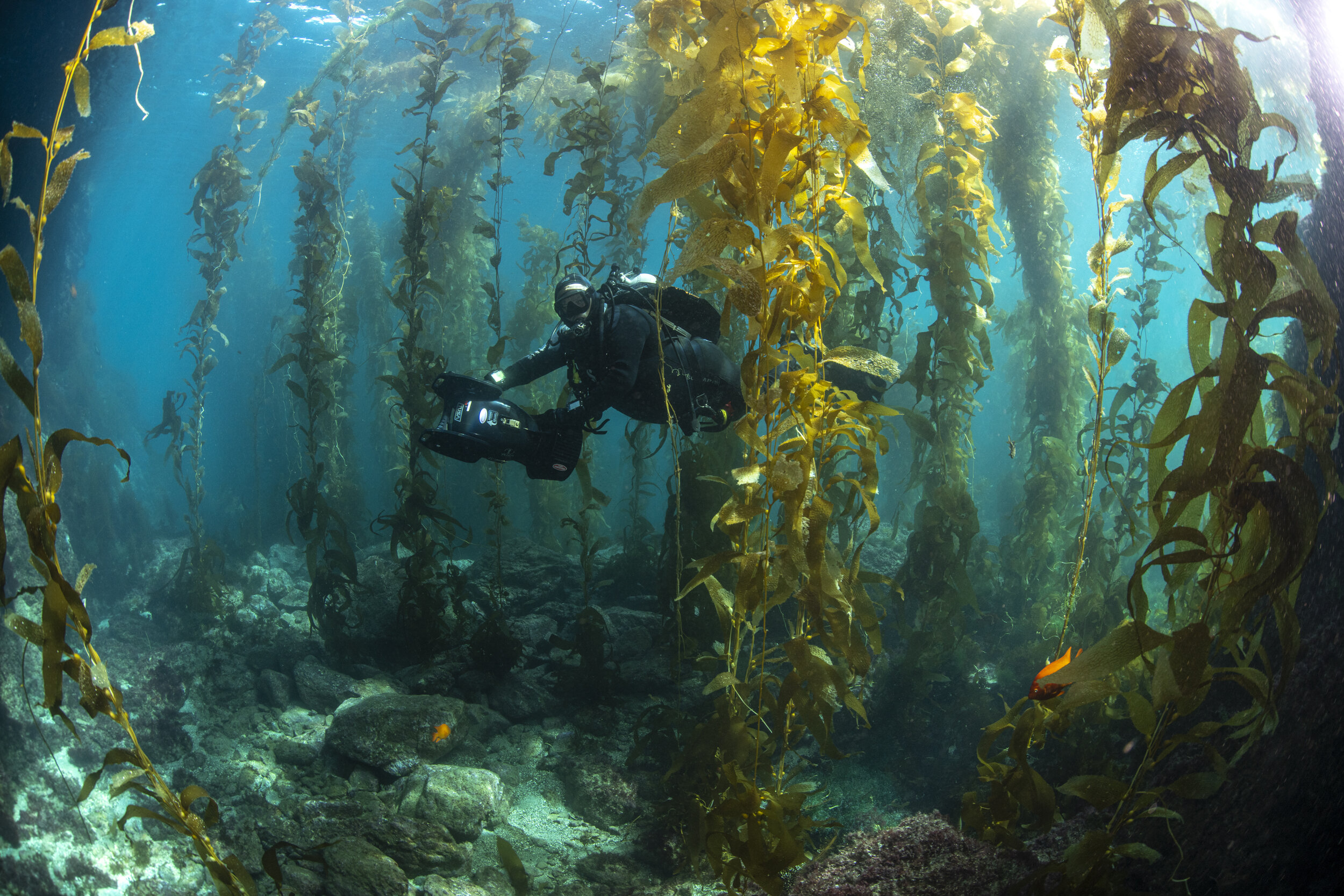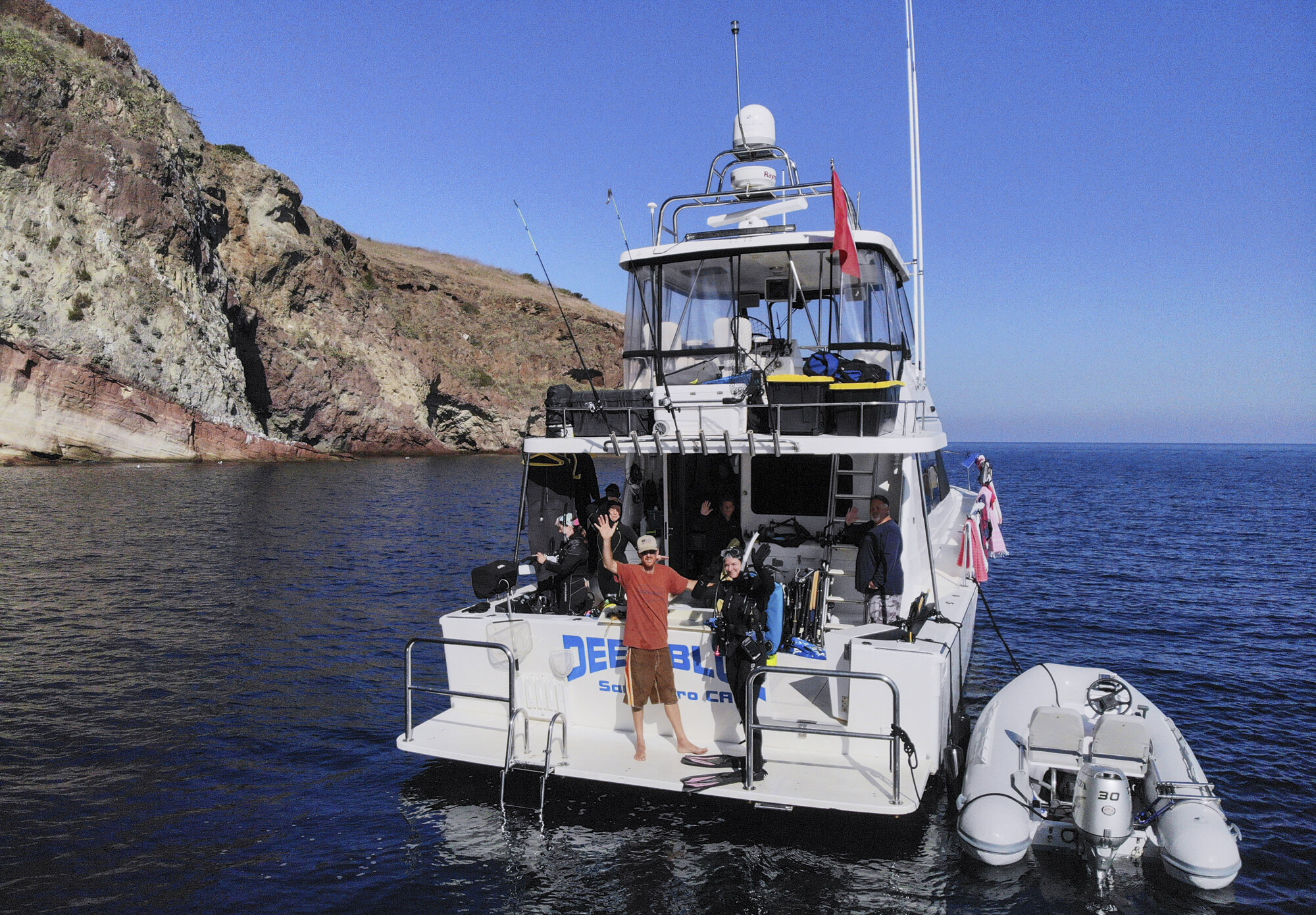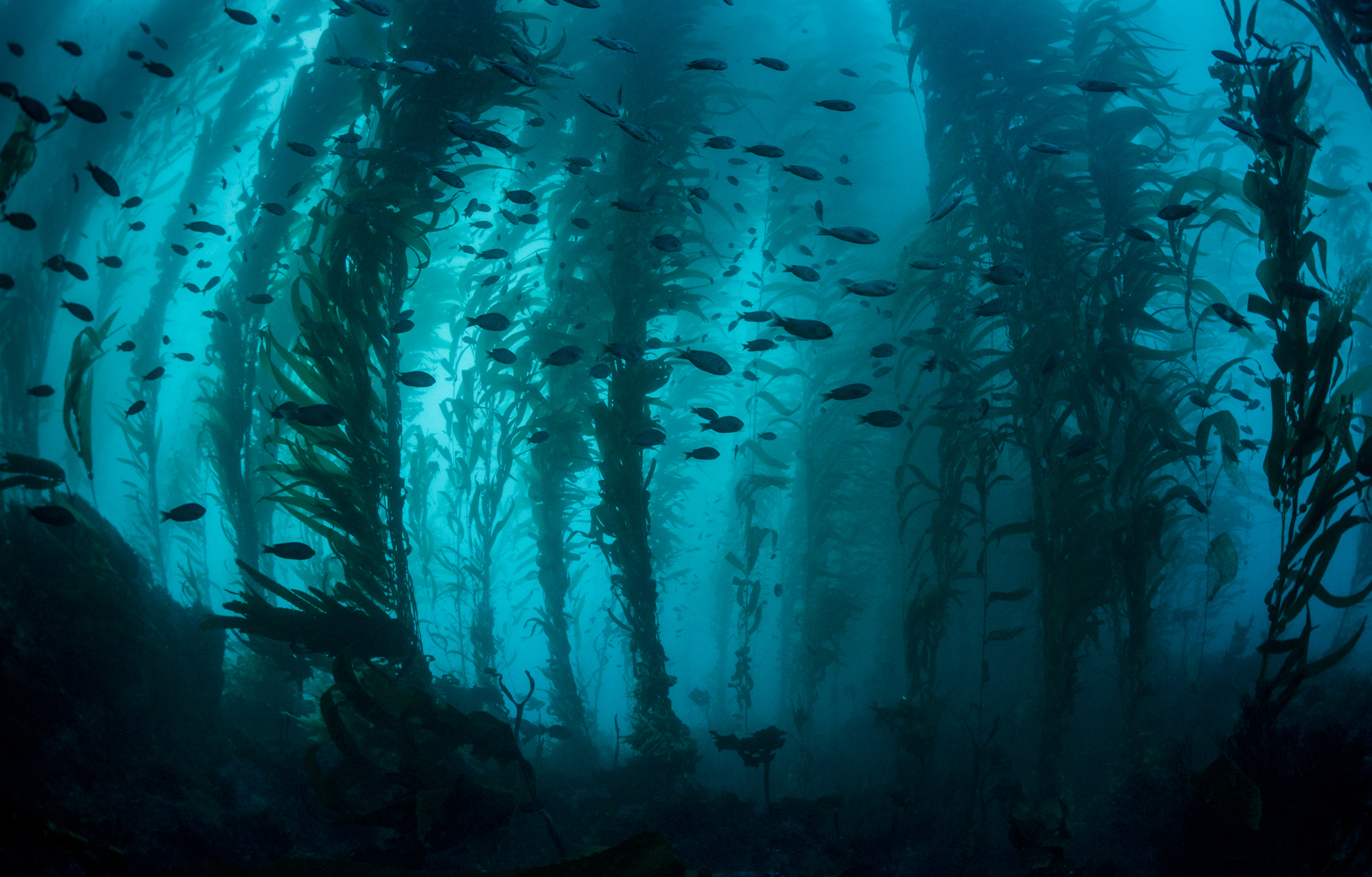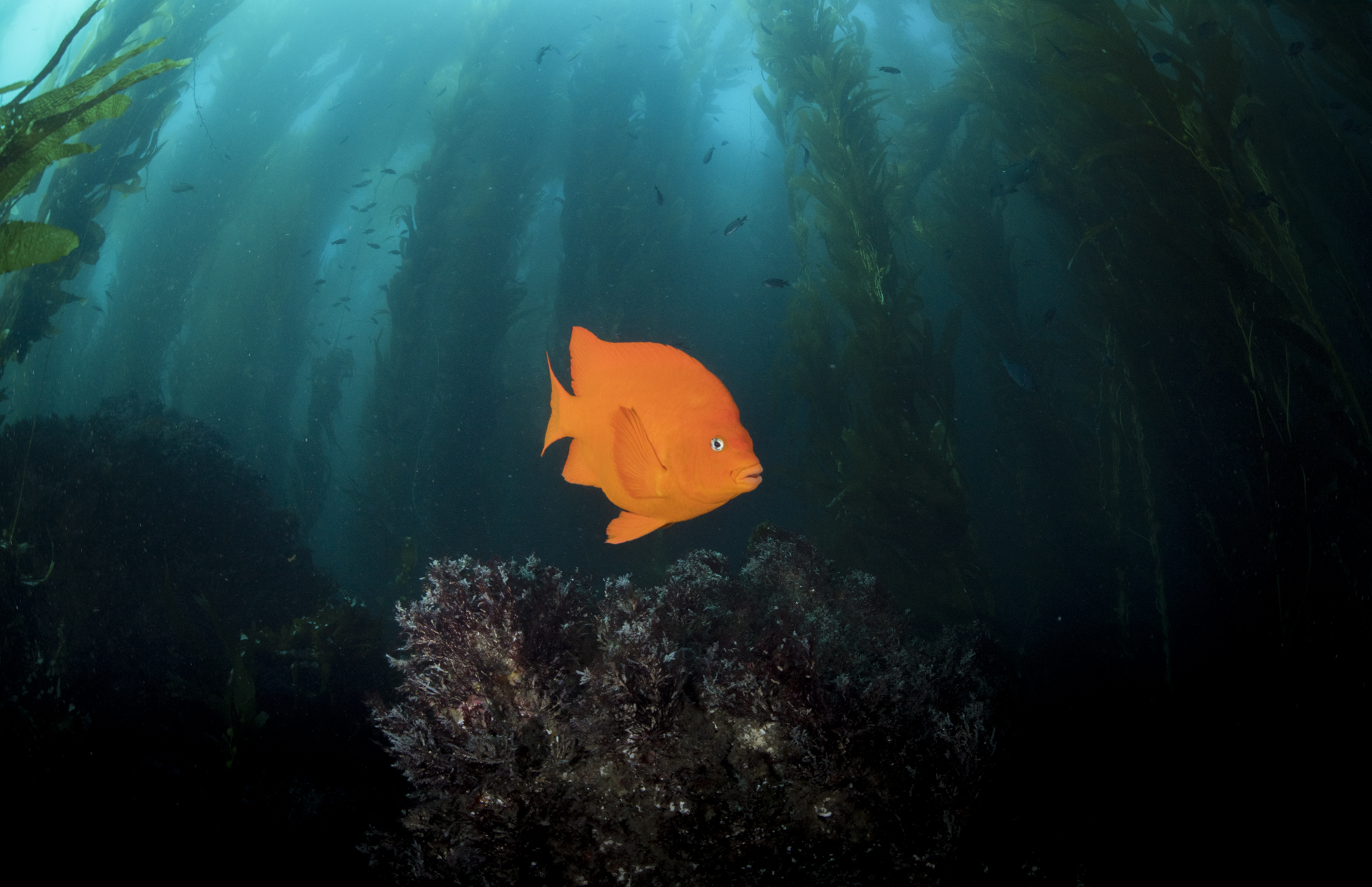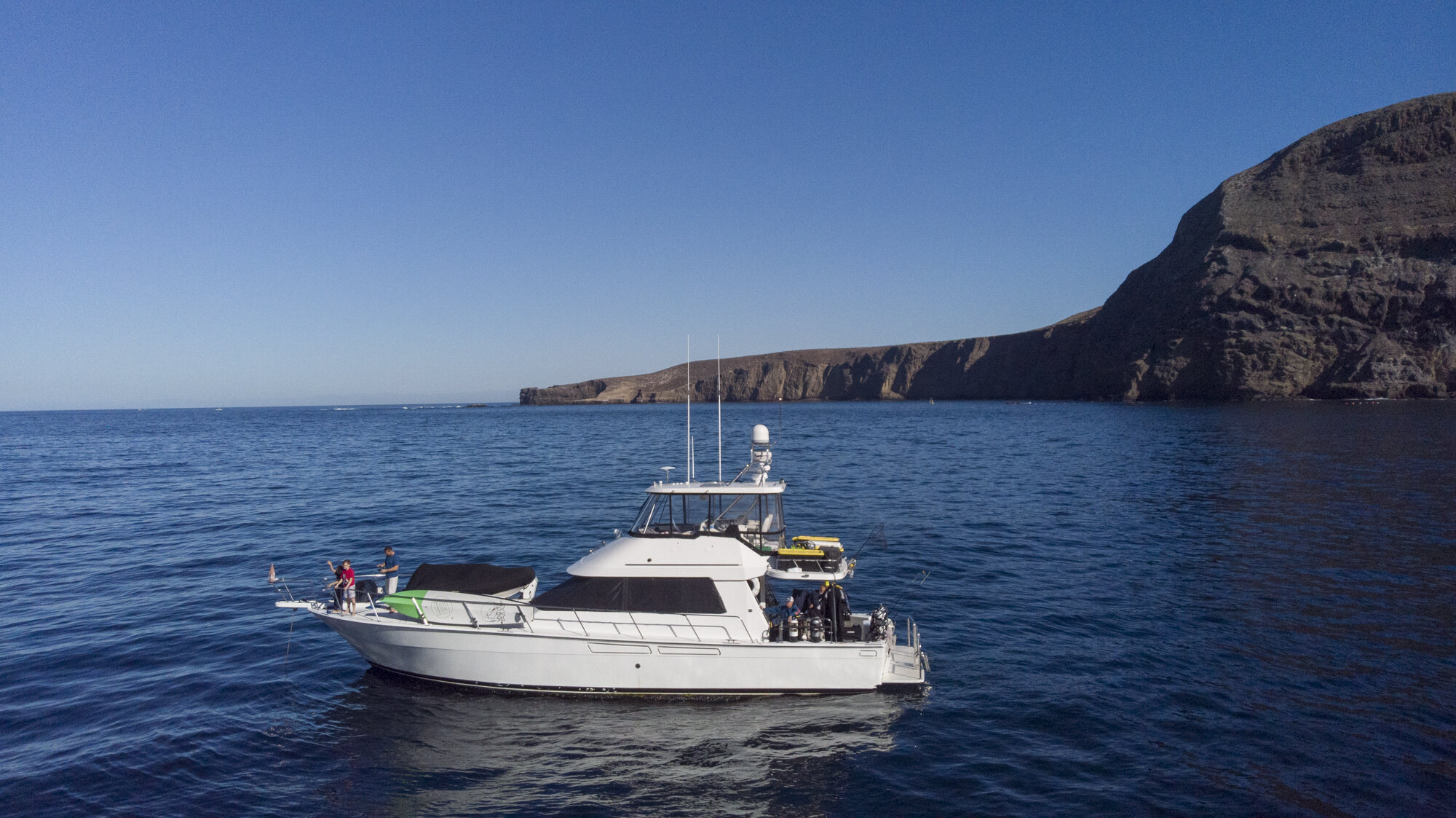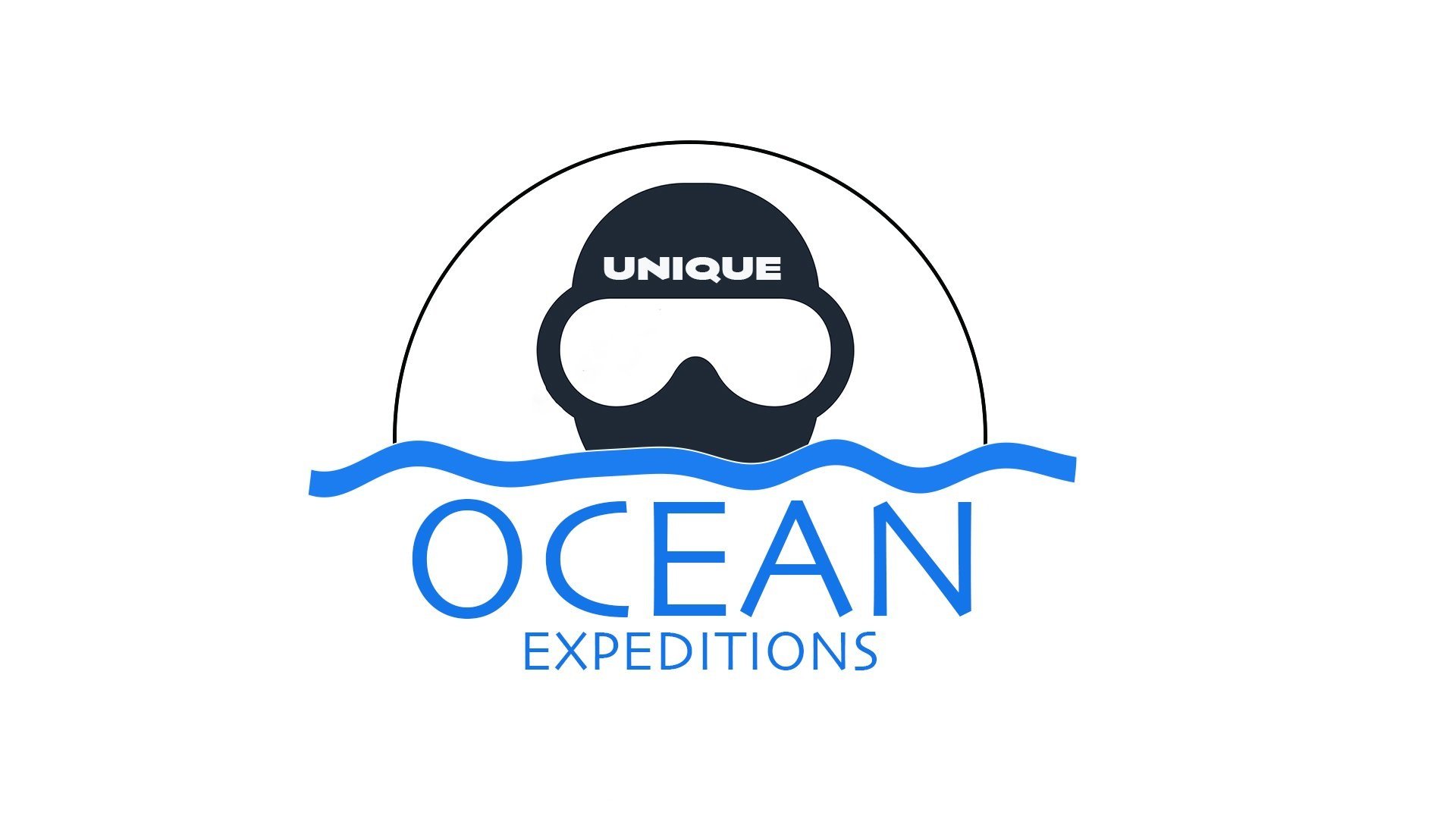CHANNEL ISLANDS
THE LAND OF THE GIANT SEA BASS AND GIANT KELP
The Land Of The Giants ! Giant Kel, Giant Underwater Reef Scapes, Giant Sea Bass
THE EXPEDITION
This expedition venture’s to the west coast of America, and to one of the most famous states, California. Just off the coast of Los Angeles lies the Channel islands. A unique and diverse chain of islands running north to south. We concentrate our expeditions mainly in the southern islands from Santa Barbara to Catalina Island.
Diving in Southern California offers a lot of diversity in marine life and photography opportunities, with the main highlights looking for giant sea bass as you swim through the majestic forests of giant kelp. Besides being one of the most beautiful place’s to enjoy sunsets, the coastline of California features many exciting destinations for scuba divers and snorkelers. Marine life enthusiasts and underwater photographers can interact with seals, large schools of fish, nudibranchs with high chances of dolphins or humpback whales in the right season from a distance.
CALIFORNIA AND CHANNEL ISLAND DIVING
Giant Kelp forests are everywhere around the island rising up from 25ft-65ft on the bottom up to the surface. Current can often be gauged by looked down at the kelp from a boat. Large Bat rays are often sitting in the sand near the kelp. Giant sea bass are most often seen east of Two Harbors on the frontside of the island, at 40-70ft deep. Angel sharks are found in the sand, near where the kelp/reef ends - often at 90-100ft deep
Mantis shrimp - live in large holes in the sand, 50-80ft deep. Near Little Gibraltar is a good place. Octopus can be found in many crevices at 20-40ft deep. Moray Eels are in cracks and crevices 30-45ft deep, especially on the frontside. Horn sharks & Leopard sharks are often seen. Sea fans & Anemones adorn many dive sites, and Farnsworth Banks has purple hydrocoral. Harbor Seals can be found in shallow water in the kelp, and Garibaldi & Sheephead are found everywhere, as arae Blue-banded Gobies. Zebra gobies are harder to find and a rare treat. Spanish shawl Nudibranchs are found on most rocky reefs, and other nudibranchs are more seasonal
ITINERARY
Arrival (Thursday Night) - 6pm Arrive at the boat and set up your dive gears
Day One (Friday) - Travel From San Pedro to Catalina Island for the first few dives.
Day Two (Saturday) - Move To Santa Barbara Island for three dives, stay overnight at Santa Barbara.
Day Three (Sunday) - Two Dives around Santa Barbara Island and head back to San Pedro
Departure - (Sunday Night) - 10pm
INCLUDES
3 days of Diving
Lunches
Transport to and from Diving Shop
Airport Transfers
Photography workshop with Richard Barnden
EXCLUDES
International & Domestic Flight
Meals other than Lunch
Park Permits
Gratuities
Rental and Dive Gears
LIVEABOARD DIVING
CATALINA PARK
DIVE SITE INFORMATION
WATER TEMPERATURE - 22c / 65F
WETSUIT - 7mm / Drysuit
SOUTHERN CHANNEL ISLANDS
CATALINA ISLAND is a popular location for underwater photography and diving in the Southern Channel Islands, in Southern California. Beautiful giant kelp forests surround the island, and large black sea bass frequent the waters. California marine life is very prolific here. There is also the popular Catalina Dive Park. Scuba diving Catalina Island is a wonderful experience you will never forget.
Farnsworth Banks - This seamount comes up to 55ft at the surface, and it lies on the backside of catalina. Beautiful purple hydrocoral lies all over this dive site, lots of fish, and torpedo rays frequent the area. Advanced divers only.
Ship Rock - Ship Rock rises from 120-200ft in the sand to above the surface. Schools of fish fill it's kelp forests, angel sharks are found in the sand, and nudibranchs lie on the deeper rocks in the spring. Nearby Bird Rock is also a nice large site with plenty of kelp and small walls.
Two Harbors area - besides Ship Rock, dive sites near Two Harbors, like Sea Fan Grotto, Blue Cavern, Lion's Head, Bird Rock and Eagle Reef all have giant kelp forests and are good for wide-angle underwater and fish photography. Go slowly in the 30-50ft range and look into cracks and crevices.
West end cove - Clear blue water is often found here, filled with schooling jack mackeral and a few shy harbor seals. There's good diving here from 100ft deep to the surface. I've seen yellowtail and mola-mola here, and there's good macro at all depths. Beware of currents.
Italian gardens - The areas around Italian gardens on the east side of catalina get frequented by Giant black sea bass from July to October, mostly around 40-70ft deep where the kelp meets the sand. Best for wide-angle shots.
Rock quarry - Scythe butterfly fish flutter in and out of rocks. Angel sharks lie in the sand deep, and the kelp forests to the east are very lush and healthy at 20-30ft deep.
Long point - A wall with sea fans drops from 60ft down to 110ft deep. The kelp forest to the west is large, tall and filled with schooling fish and nice structure, and the water here is usually quite clear.
Eagle Rock - on the west end of Catalina, right around the corner on the back side. Spectacular sea fans around the entire rock at 40-80ft depth make this one of the best wide-angle dive sites in the area.
Blue Cavern Point - beautiful wall dive with some sea fans, just east of Two Harbors, with many caves and caverns in shallow water. Excellent visibility, must be done as a drift dive. Drops down past 130ft deep.
THE CASINO POINT dive park, in Avalon on Catalina Island, is a special place. Also known as the Catalina Dive Park, divers shore dive here, getting air fills nearby. Two deep wrecks called the SueJac and the Valiant are excellent underwater photography subjects. Octopus, giant kelpfish, moray eels, garibaldi, bat rays and schooling fish all frequent the dive park. Here is a map of the dive park.
To get to the dive park, take a ferry from Long Beach or San Pedro, and then take a taxi to Casino point.
Black sea bass are often found where the kelp meets the sand, especially in the summer.
The Valiant wreck, at 70-100ft depth just outside of the park, is a decent size shipwreck great for macro and wide-angle underwater photography. Look for nudibranchs on the bow (the deeper end).
The swim platform at 55ft depth, in the far left corner of the park, has many macro subjects on it such as light-bulb tunicates.
SAN CLEMENTE ISLAND has the best kelp, clearest warmest water, and great structure, San Clemente is an excellent destination for wide-angle underwater photography. Unfortunately the Navy often closes a large portion of the island, so it is not always dive able. The southeast corner is dove the most, due to the rest being frequently closed for Navy practice.
Pyramid Cove - large dive site with beautiful kelp, sea fans and structure
Castle Rock - nice kelp forest and shallow caves
Nine Fathoms - also known as Arch rock. A deep offshore reef with purple hydro coral on the northwest end. 60 feet depth at the top.
Little Flower - beautiful large reef in a protected cove, great for wide-angle underwater photography. Sometimes you'll find soup fin sharks here.
SANTA BARBARA ISLAND is a popular overnight trip because of its sea lion rookery. Many playful sea lions will come and visit you in a sandy dive site on the southeast corner of Santa Barbara island. This is considered the best place in Southern California to photograph sea lions. The island is very exposed, and the other excellent dive sites are often not dive able.
Sea Lion Rookery - shallow diving, sheltered, lots of sea lions in clear water
Archway - rich in marine life, purple hydrocoral
Black Cavern - a deep site with many caves and caverns
Sutil - a large offshore rock, with beautiful kelp forests
Brittle Star Reef - millions of brittle stars carpet the floor at 60-75ft depth, with a nice rocky reef and kelp
NORTHERN CHANNEL ISLANDS
ANACAPA ISLAND is a short boat trip from Ventura and Oxnard, and day trips run often. This is one of my favorite islands for diving. Visibility is usually 30-50ft, the island is quite protected, and the reefs have more marine life than Catalina, although the water temps are a little cooler. Best diving is usually on the east & west ends, and on the south side. Dives sites are usually a little more shallow at Anacapa, and I usually don't need Nitrox, unless I am focusing on macro. Diving Anacapa island is always a treat.
Cathedral cove - Giant Kelp forest and a sea lion rookery make this Anacapa dive site excellent for wide-angle photography.
Landings cove - I always find great macro opportunities, including nudibranchs here, between 30-60ft depth. There is a large underwater arch here that you can easily swim though, with excellent fish and macro subjects on both sides of the arch.
Coral reef - sometimes currents can be strong here, but excellent macro and good wide-angle photography are good here, and there are usually millions of brittle stars forming a brittle star carpet from 60-80ft depth.
Channels - beautiful shallow area that is excellent for wide-angle photography, usually with Harbor Seals. It's very near a good macro site called Underwater Island, which is simply in deeper water
Rat Rock - the very west end of Anacapa has very good overall diving when conditions allow diving here. Great for wide-angle or macro.
Portuguese Rock - there are some interesting critters in the sand that will interest the underwater macro photographer. It's on the edge of the Pelican reserve. 15-40ft depth.
Pelican reserve -great for macro, juvenile fish and uncommon critters. However, this area can only be dove in November, it's closed the rest of the year.
Cat Rock - a solid site on the south side, with healthy kelp, good structure and brittle stars deeper.
WORKSHOP SKILLS
RICHARD BARNDEN from Richard Barnden Photography will be leading this expedition and sharing his knowledge and skills of shooting the Cenotes. Each evening Richard will give in depth presentations about the following days diving along with photography tips on settings and compositions.
The cenotes is one of the best places in the world to shoot those classic cavern shots with eye catching beams of penetrating light. Each day we will explore a new cenote and concentrate on capturing its beauty.
SKILLS EXPLORED
Equipment and Photographic Gears
Cave Environments
Lighting - Ambient Light
Lighting - Strobes vs Continues light
Settings and Compositions
